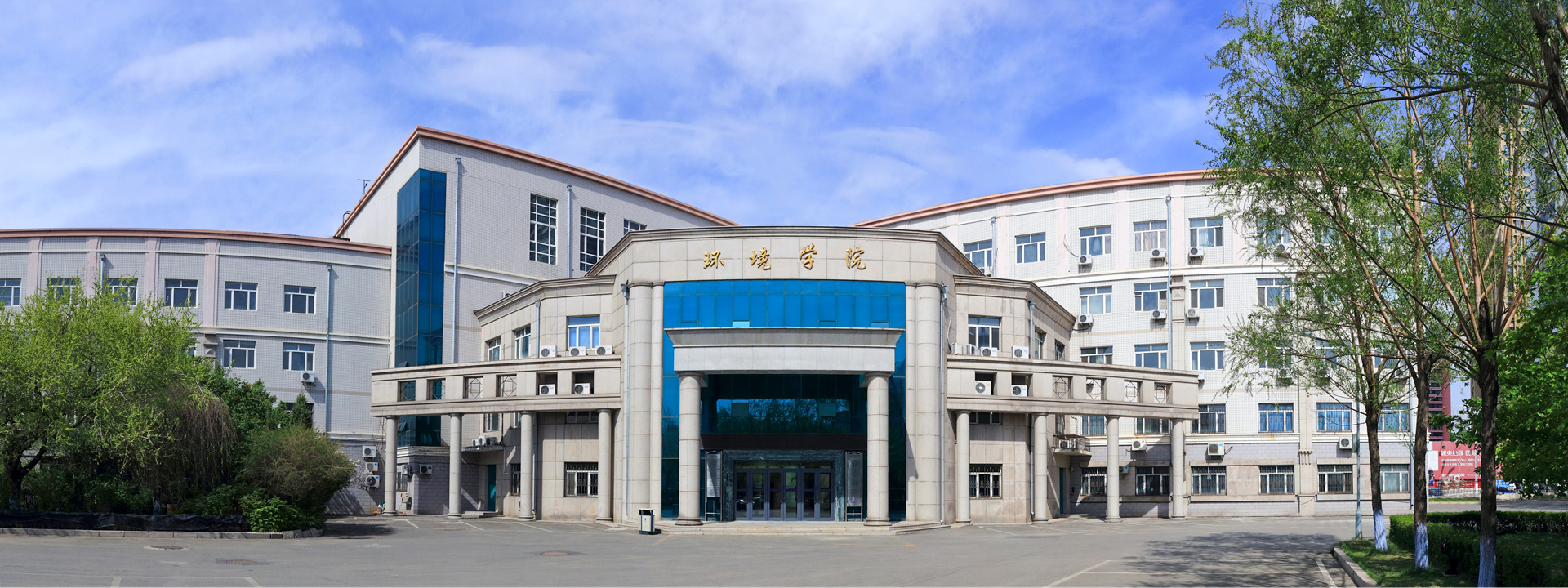The School of Environment boasts a long history and a legacy of excellence. In 1920, the Harbin Sino-Russian Industrial School established a Department of Railway Construction, offering specialized courses such as “Water Supply and Drainage.” In 1925, the Department of Railway Construction Design established a Water Supply and Drainage Teaching and Research Section. In 1952, it launched the nation's first Water Supply and Drainage program. In 1985, the undergraduate Environmental Engineering program began enrolling students. In 1996, the School of Municipal and Environmental Engineering was founded. In September 2016, to better advance the development of world-class disciplines, the university restructured and established the School of Environmental Sciences.
As the chairing institution of the Teaching Guidance Subcommittee for Water Supply and Drainage Science and Engineering under the Ministry of Education and the vice-chairing institution of the Teaching Guidance Committee for Environmental Science and Engineering, the School has consistently served as a vital hub for cultivating high-level innovative talent, conducting scientific research, and facilitating academic exchange in China's ecological and environmental field. The Environmental Science and Engineering discipline has consistently ranked among the top in successive evaluations by the Ministry of Education. In the fourth round of discipline evaluations, it achieved an A+ rating, and in the fifth round, it continued its outstanding performance by being included in the “First-Class Discipline Cultivation Initiative” list. The discipline's international reputation and influence continue to grow. In the 2024 QS World University Rankings, it entered the top 100 globally. It ranked 107th in the ESI global rankings, 79th in the Times Higher Education World University Rankings, and 7th in the Shanghai Ranking's Global Top Disciplines Ranking.

The School has consistently positioned itself among the front rank of environmental science and engineering institutions and the leading echelon of environmental disciplines. Aligning with national ecological and environmental strategies and international scientific frontiers, it stays attuned to contemporary demands while deeply integrating artificial intelligence. This approach has fostered an innovative talent development system characterized by smart ecological and environmental features. It currently offers five undergraduate programs, with three—Water Supply and Drainage Science and Engineering, Environmental Engineering, and Environmental Science—designated as national first-class undergraduate programs. Two new programs, Environmental Ecological Engineering and Urban Water Systems Engineering, were approved for development in 2020 and 2021, respectively. The school holds master's and doctoral degree granting authority in the primary discipline of Environmental Science and Engineering and the secondary discipline of Municipal Engineering. It has cultivated nearly 10,000 outstanding talents for the Party and the state across scientific research, engineering, education, and management fields. Among them are seven academicians of the Chinese Academy of Engineering, including Qu Jiuhui and Peng Yongzhen, Vice Chairperson of the Standing Committee of the Heilongjiang Provincial People's Congress Jia Yumei and other deputy ministerial-level and higher Party and government leaders; industry elites such as National Survey and Design Masters Zhao Li and Li Shuyuan; and renowned entrepreneurs. The school has made significant contributions to the development and expansion of China's ecological and environmental sector and is hailed as the “Whampoa Military Academy” of China's water environment field.
The School comprises four departments: Municipal Engineering, Environmental Engineering, Environmental Science, and Environmental Ecology, along with one Experimental Center. The School currently enrolls 238 full-time undergraduates, 477 master's students, and 542 doctoral candidates. With 93 full-time faculty members, it has established a high-caliber teaching team led by four academicians of the Chinese Academy of Engineering—Li Guibai, Zhang Jie, Ren Nanqi, and Ma Jun—and anchored by eight national-level high-tier talents and eight national-level young talents. National-level talents constitute 22% of the full-time faculty. The School hosts two National Natural Science Foundation of China Innovation Research Groups, one Ministry of Education Innovation Team, one Ministry of Science and Technology Key Field Innovation Team, one Ministry of Education Curriculum Ideological and Political Education Teaching Team, and two Heilongjiang Province “Leading Swan” Science and Technology Teams. Faculty members have been honored as National Model Teachers and National Advanced Workers, with several individuals and teams receiving awards such as the National Innovation Pioneer Award and the National Workers' Vanguard Honor.
The college upholds Party-building leadership, focusing on implementing Xi Jinping Thought on Ecological Civilization and practicing the concept that “lucid waters and lush mountains are invaluable assets.” It has established the Party-building brand “Forging Red Souls, Greening the Future,” driving deep integration between Party-building efforts and core missions. All faculty Party branch secretaries are dual-role leaders, with four holding provincial-level or higher talent titles. The Municipal Engineering Department's faculty Party branch was selected as a model branch for Party-building “Demonstration Creation” in Heilongjiang Province. Academician Ma Jun was honored as an “Advanced Individual in Combating the COVID-19 Pandemic within the Industry and Information Technology System.” Associate Professor Liu Guohong was selected as a “Second National Pioneer in Rural Revitalization.” Professor Qiu Wei was recognized as an Outstanding Communist Party Member by the Provincial Education Working Committee. Counselor Wang Jing was honored as one of “Longjiang's Most Beautiful Counselors.”
The college is committed to addressing national needs and serving the main battlefield of the national economy. Focusing on five key research areas—theory and technology for water system security, solid waste safe disposal and resource utilization, regional air pollution causes and coordinated prevention, ecological security and environmental health, and green and low-carbon technologies with smart management. It has produced a series of high-level achievements and key applied technologies, leading the iterative development of drinking water technologies in China and achieving a leap from water quality compliance to health standards. The School has established the version-4.0 theoretical and technological system for green and low-carbon urban water circulation systems, guiding the construction of more than half of China's sponge city demonstration projects. The institute has garnered 17 national-level awards and over 30 provincial/ministerial-level honors in the past decade, undertaking more than 100 major national and provincial research projects. It hosts key national research platforms including the State Key Laboratory of Urban Water Resources and Water Environment, the National Engineering Research Center for Urban Water Resources Development and Utilization (Northern Region), the National Engineering Research Center for Sludge Safe Disposal and Resource Recovery Technology, and the National-Local Joint Engineering Research Center for Bioenergy Development and Utilization.
